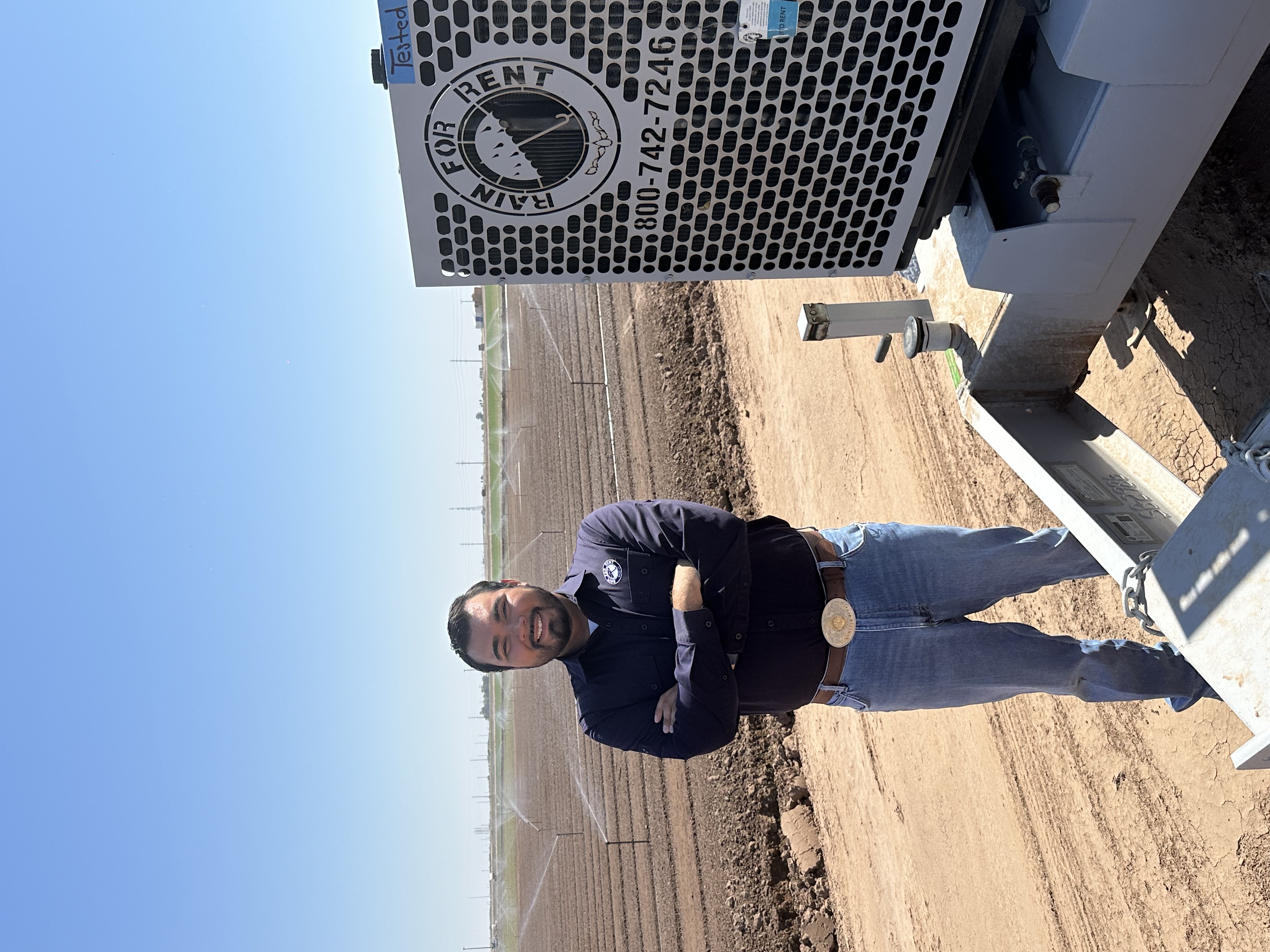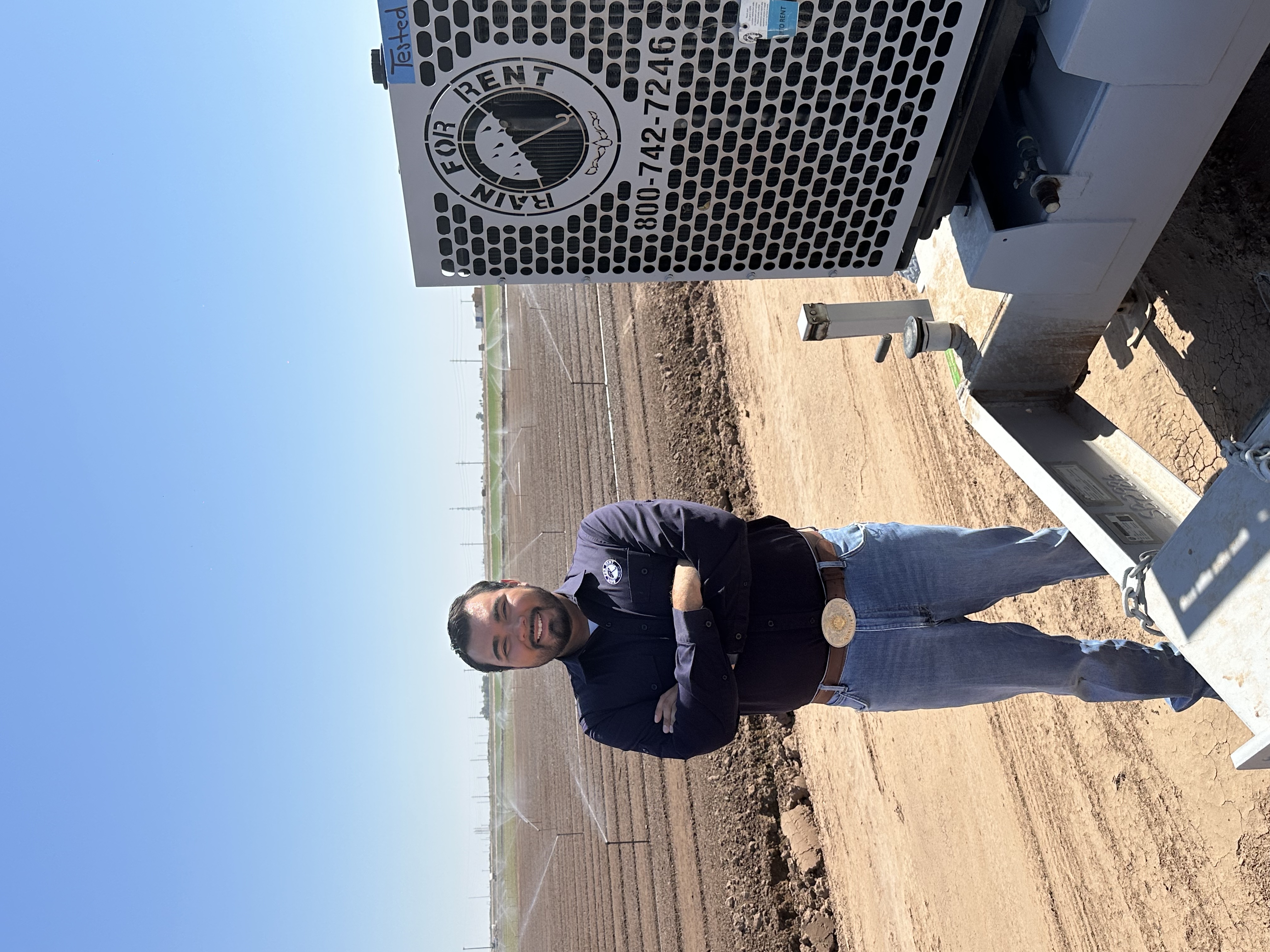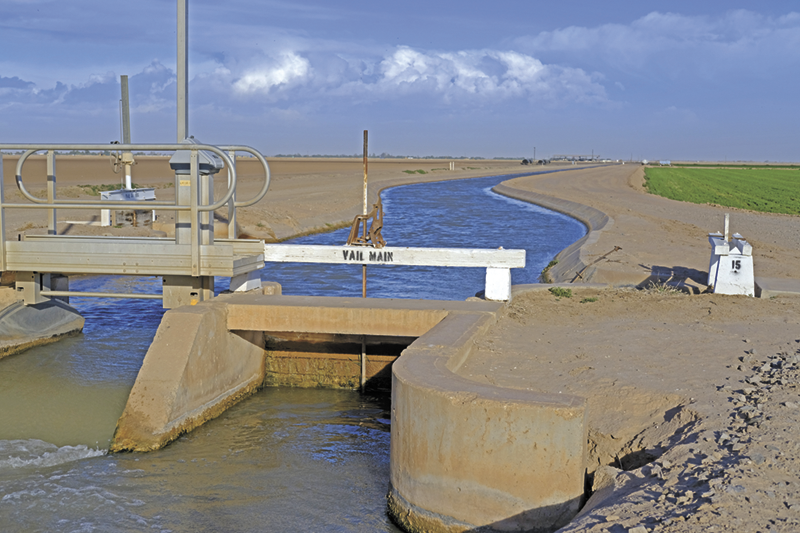Sales rep helps farmers find options for irrigation needs

John Tamayo, agricultural sales representative for Rain for Rent, works with farmers to find the best irrigation systems for their farms. Tamayo represents Santa Clara, Santa Cruz and San Mateo counties on the California Farm Bureau Young Farmers & Ranchers State Committee.
Photo/Courtesy of John Tamayo


Photo/Caleb Hampton
By Caleb Hampton
John Tamayo, agricultural sales representative at Rain for Rent, has been around agriculture his entire life.
Tamayo’s grandfather farmed in El Centro in Imperial County. And growing up, Tamayo tagged along with his father, who worked as a sales representative for a chemical fertilizer company.
“I used to go with him every chance I got,” Tamayo said, recalling his early impressions of the Imperial Valley’s 500,000 acres of farmland, where much of the nation’s vegetables are grown each winter. “That’s where I got my interest in agriculture.”
During high school, Tamayo got involved with Future Farmers of America. While attending Imperial Valley College, he participated in the agriculture club there before transferring to the University of Arizona, where he studied agricultural systems management.
Tamayo also interned at the University of California Cooperative Extension Center in Holtville, working as an irrigation and weed science research intern.
“That was my first time handling irrigation,” Tamayo said, adding that he gained familiarity with the nuances of different types of drip tape, emitters and product brands. “I was seeing a different side of agriculture that I hadn’t really seen before.”
The experience prepared Tamayo for his role as a salesperson at Rain for Rent, a Bakersfield-based provider of liquid handling equipment for agriculture and other sectors. He joined the company after graduating from the University of Arizona in 2022.
At Rain for Rent, Tamayo is responsible for a region that includes the northern part of the Imperial Valley and the Coachella Valley, Borrego Springs and Blythe.
His job duties include visiting farms to talk with farmers and foremen about their irrigation needs.
“We go out to their field and evaluate it,” Tamayo said. If a farmer wants to install a sprinkler irrigation system, for example, “then we put together an estimate of how many joints of lateral pipe, main line and what type of booster pump they need, depending on the amount of acres that they need to irrigate.”
Working in irrigation on Imperial Valley farms has put Tamayo on the front lines of the most ambitious water conservation effort in the country.
Imperial Valley and its $2.6 billion agriculture sector are wholly dependent on the Colorado River for water. Amid warnings that the river is running dry, farmers in the valley have undertaken efforts to conserve 700,000 acre-feet of water by the end of 2026, an unprecedented amount, some of it through the installation of more efficient irrigation systems.
“I appreciate being able to play a role in that,” Tamayo said. “We’re trying to maintain the water in the Colorado River, to keep it more sustainable. That’s in the forefront of a lot of people’s minds—to make sure that there’s enough water for farmers here in Imperial Valley for generations to come.”
Tamayo said that as more farmers begin trying new types of irrigation, it is important that information be accessible to them so they can make decisions based on their particular circumstances.
“I find some farmers may have difficulty seeing the difference between different types of sprinklers or other irrigation systems. I like being able to try to make it as clear as possible for them so they can better understand their choices and what would be best for them,” Tamayo said.
He added, “Drip is becoming more and more popular down here. It’s good to be able to explain the benefits of it to farmers seeing it for the first time, or using for the first time in their field, and then seeing how much water they’re saving and how much money as well. We’re giving farmers different tools and options to manage their water better and also increase their yields.”
Tamayo’s desire to support farmers led him to get involved with the Farm Bureau and its Young Farmers & Ranchers program, where he serves on the State Committee representing Santa Clara, Santa Cruz and San Mateo counties.
“I enjoy establishing and maintaining good relationships with farmers, making sure they know we’re here to support them as much as possible,” Tamayo said. “We want to be there through their successes and their struggles, especially during the difficult times to make sure they know that they have a partner.”
A recent change in the organization’s policy enabled Tamayo to represent counties he neither lives nor works in, giving him a new view of agriculture in California.
“It’s interesting to see the different forms of irrigation in other parts of the state,” he said, referring to coastal areas that rely more on groundwater in contrast to Imperial Valley, which has none and uses a unique system of gravity-fed canals and ditches to convey water from the Colorado River to the valley’s vast farmland.
Representing three coastal counties “has definitely given me a different perspective on different agricultural communities,” Tamayo said.
“It has shown me how diverse California is. In those areas, you see a lot of wineries and vineyards. You have leafy green vegetables there as well,” he said. “Down here, we have more forage crops. It paints a different picture.”
He added, “I’m grateful that I got the call to be able to serve and to give back to the ag community in this role.”
(Caleb Hampton is an assistant editor of Ag Alert. He may be contacted at champton@cfbf.com.)




